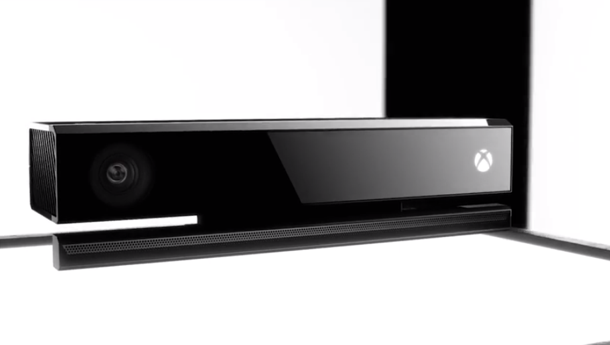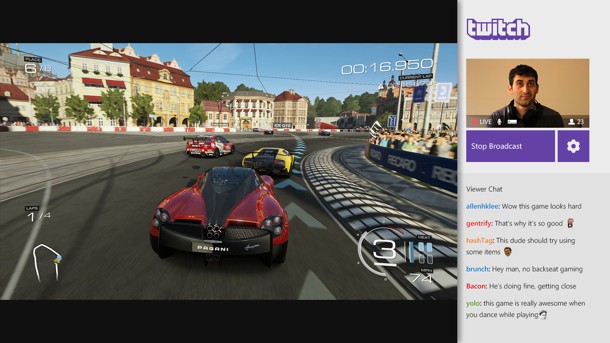Analysis - Breaking Down The Kinect-Free Xbox One

Since Microsoft unveiled the Xbox One on May 21, 2013, the company has been haunted by decisions and comments about the console’s direction. Today, Head of Xbox Phil Spencer and his team announced three major changes that should shrug off the specter of the past in favor of striding into the future.
Today, Microsoft announced that customers will have the option to purchase an Xbox One without Kinect, marking a huge shift in the company's messaging. "Xbox One is Kinect. They are not separate systems," Microsoft corporate vice president Phil Harrison said in August 2013. Today, that statement was undone, and the first systems without a Kinect will be on sale June 9.
Spencer tells us that the this decision was about giving consumers choice, and that the execution is possible because of a decision made in 2013. “When we made the decision last summer that you could run with Kinect unplugged, that was a fundamental decision for the program,” he says. “There was a different leadership team in place, but that discussion led us to think about a console where Kinect was not required to be plugged in at all times. You can roll back to that decision and it enables what we’re announcing this morning.”
Because removing the Kinect now doesn’t require engineering changes, it freed Spencer and his new leadership team, including chief marketing and strategy officer Yusuf Mehdi, to move ahead. “In areas where it’s a just a policy decision or a SKU decision, and we can make those decisions, that’s something that we wanted to roll pretty quickly into this program. It took going through some of the engineering timelines to make sure we could really get this done in the time we wanted to, or things we hadn’t thought about.”

On Price
The first thing that Microsoft’s decision does is achieve price parity with Sony. Some customers cited the $100 price difference between the Xbox One and the PlayStation 4 as a reason to go with the latter.
Removing Kinect from the box and lowering the price gives the peripheral’s detractors a reason to reconsider Microsoft’s system. That doesn’t mean that Spencer and his team are giving up on the device entirely. “As the head of the platform, I want everybody to have Kinect,” he says. “When we made this decision, we also made the decision to make Kinect available as a standalone accessory. I hope that people will buy the $399 SKU and then, over time, see through games, voice, and communications that Kinect is a great experience and then add that later.”
It’s unclear how gamers will be able to have the Kinect experience without the device in order to decide they like it, though. It’s more likely that the positioning around the Kinect will change, and it will become the focus of user experience advertising. The dashboard will likely undergo some interface changes to account fewer people in the long-term owning a Kinect.
“Voice and gesture are in some ways easier ways to control the dash, and I want that to be the value proposition of Kinect itself, but we are committed to our monthly updates,” Spencer says. “We’re going to continue the frequency of our monthly updates for the UI both for developers and for gamers.”
Spencer says that the groundwork for this decision was laid during Summer 2013. “When we made the decision that you could unplug Kinect, we had to think about somebody using the dash with just a controller,” he says. “Even if you have Kinect plugged in, there are people who are just going to use the controller for certain parts of the dash. We’re committed to updating the dash for all users.”
However, there is one aspect on which a non-mandatory Kinect policy will likely have an adverse impact: game experiences.

On Games
Right now, there are only two retail games on Xbox One that rely on Kinect: launch title Fighter Within (our review) and Kinect Sports Rivals (our review). The only other we know of is Disney Fantasia: Music Evolved, and the team at Harmonix can’t be viewing this news as a positive.
Removing the Kinect from the box will drastically narrow the install base for their title, which is due out this fall. But it will also chill incentive for developers to use the technology in the future.
It was already a tough proposition for multiplatform titles, but now, Kinect features will be used by an even slimmer subset of owners. Beyond Fantasia, I would not expect any meaningful game experiences for the Kinect.
I use mine for entertainment, and I run my television through the Xbox One. I do not see it having much of a role in my gaming experience.
Spencer is optimistic, though. “I’ve been building Kinect and non-Kinect games for a while,” he says. “What I’ve found is that magical Kinect experiences–we all know them when we’re playing them, and I’ll use Dance Central as one of those. When a developer is building that game, they know the best way to play a game like Dance Central is with the Kinect sensor. This decision for me and for us as the leadership team was about giving consumers choice at retail.”
On the plus side, Microsoft could free up the processing power reserved for Kinect. Currently, the sensor is on at all times during gaming, hogging a portion of the Xbox One’s computing potential.
“We’re not announcing anything today on that topic,” Spencer responded to a question about this. “We don’t have a decision to communicate today. We’re committed to building the best platform for gamers and developers. I want to make sure we have the right system for developers. That’s critical to our long-term success.”

On Voice Commands And Rolling Out In More Countries
At the end of April, I asked Microsoft where it stood with voice command functionality in the currently-released territories and the upcoming 26 countries. What I found out wasn’t heartening. Three of the thirteen launch territories still have no voice commands. Five of those that do don’t have full capabilities.
I find it likely that voice command localization has proved more time intensive than Microsoft expected. I also expect that a Kinect-free offering will be made available in many of the countries that will be receiving the Xbox One in September.
Without a Kinect, there’s no pressure to get voice commands up and running in time (or close to) launch. Instead, Microsoft can just release the Kinect as a standalone device in those territories when functions are supported.
Kinect was only one of the three pillars from this morning’s announcement (though clearly the biggest).
Read on for our analysis of the changes to Xbox Live and Games with Gold.

On decoupling Netflix, Twitch, and others from Xbox Live Gold
Microsoft announced that Netflix, Hulu, Skype, sports apps, OneDrive, GameDVR and Upload, along with many others are no longer behind the Xbox Live Gold paywall. That means that every Xbox 360 and Xbox One owner can view their subscription services without paying Microsoft an additional fee.
Spencer tells us that the landscape has changed quite a bit since Netflix came to the Xbox 360. “When we brought Netflix and other streaming services to part of Gold, we were one of the first consumer devices to do that and we invested a lot in our infrastructure to make that possible,” Spencer recounts. “It was a logical part of the Gold value proposition.”
The change in paywall policies was “obvious” to Spencer, who cited the prevalence of subscription apps on any number of devices without an additional fee. “I didn’t want Xbox 360 or Xbox One to be seen as prohibitive to those customers who want to watch Netflix or YouTube or browse the web. This, to me, was a little bit about becoming current with the state of the industry on those apps.”

On Games with Gold and other content-based value
One thing that does change with the paywall shift is the value that Xbox Live Gold brings to customers. The playing field has shifted a bit with Sony now charging for online gameplay, but Microsoft will be finding other ways to make the $60 per year fee worthwhile.
“We’re investing more with our Games with Gold program,” Spencer says. “It’s coming to Xbox One. We’re adding another game in June as a celebration of our 12 months.”
Xbox One Games with Gold will be subscription based (like PlayStation Plus). As long as you have your Xbox Live Gold membership, you’ll have access. Should you drop Gold, you’ll lose your “free” games.
This is a change from how it works (and will continue to work on Xbox 360). On that platform, games downloaded as a member are yours in perpetuity, regardless of current status.
This should help Microsoft leverage better arrangements with publishers. We could see the offerings increase in both quantity and quality because of this move.
We asked Spencer if Microsoft will be adding new value in addition to Games with Gold coming to Xbox One. The answer has us thinking that things like the digital Halo project might be coming first to Xbox Live Gold.
“You can look at the content part of the subscription as a larger part of the value proposition going forward,” Spencer says. “We’re going to invest in our Live infrastructure and our cloud services that are in place, and we’ll have more to talk about that at E3.”
For more, read our coverage of the Kinect announcement, subscription app news, and Games with Gold changes. You can also check out an opinion piece about the decision to move ahead without Kinect.

Get the Game Informer Print Edition!
Explore your favorite games in premium print format, delivered to your door.
- 10 issues per year
- Only $4.80 per issue
- Full digital magazine archive access
- Since 1991









